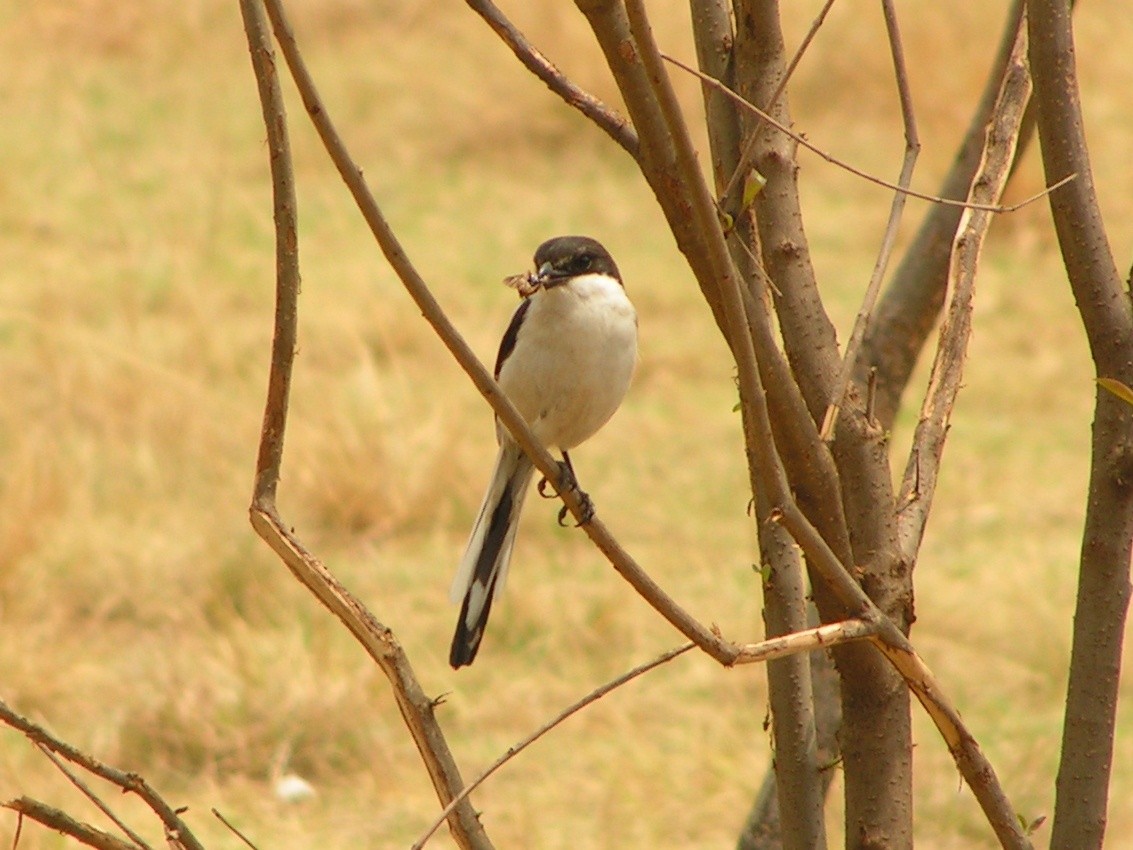Southern Fiscal
A species of Typical shrikes, Also known as Fiscal Shrike Scientific name : Lanius collaris Genus : Typical shrikes
Southern Fiscal, A species of Typical shrikes
Also known as:
Fiscal Shrike
Botanical name: Lanius collaris
Genus: Typical shrikes
Content
Description General Info
Description
This is a fairly distinctive 21–23-cm long passerine with white underparts and black upperparts extending from the top of the head down to the tail. The bird has a characteristic white "V" on the back and a relatively long black tail with white outer feathers and white tips on the other feathers. The bill, eyes and legs are black. Adult male and female common fiscals are quite similar except for the rufous lower flank of the female. The calls are a jumbled mix of shrike-like swizzling sounds including some imitations and a harsh Dzzzttt-dzzzt-dzzzt alarm call. Most of those calls however are either threatening or alarm calls. The species sometimes produces a surprisingly sweet, quiet song, although such song, however sweet it sounds, generally is either territorial or pair-bonding in function. 
Size
23 cm
Colors
Black
White
Life Expectancy
12.58 years
Nest Placement
Shrub
Feeding Habits
Southern Fiscal preys on insects and small rodents, often hunting solitarily from perches or shrubs. Known to target the plain tiger butterfly in eastern Africa, it showcases unique predatory behaviors and specific prey preferences.
Habitat
The southern Fiscal thrives in semi-arid environments and open landscapes such as woodland, savanna, and regions with acacia trees. It favors areas with short grass and scattered shrubs, suitable for efficient hunting. Adaptable to human-altered areas, it also inhabits plantation edges, urban gardens, and parks. Generally found in highlands, its elevation range is from near sea-level up to 3350 meters.
Dite type
Carnivorous
General Info
Feeding Habits
Bird food type
Behavior
The southern fiscal is usually solitary and hunts insects and small rodents from an exposed perch or the tops of shrubs. Territorial size is directly related to the density of hunting perches. Installing more artificial perches causes the fiscal to reduce its territory size and allow more birds in the affected range. In eastern Africa, the southern fiscal is a major predator of the plain tiger butterfly. 
Distribution Area
The southern fiscal lives in a wide range of habitats from grassland with fences for perching to acacia thornveld or even woodland, but avoids very dense habitats where its hunting would be impaired. 
Species Status
Not globally threatened.
Scientific Classification
Phylum
Chordates Class
Birds Order
Perching birds Family
True shrikes Genus
Typical shrikes Species
Southern Fiscal 